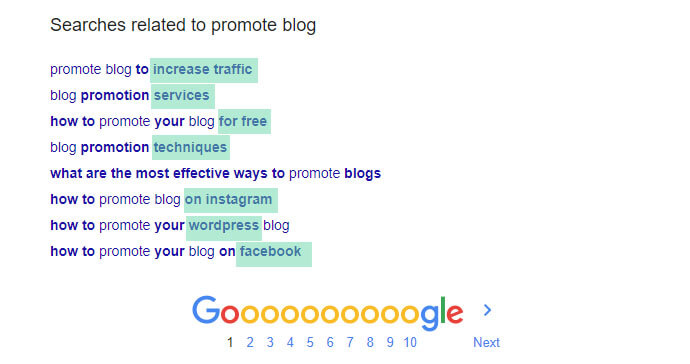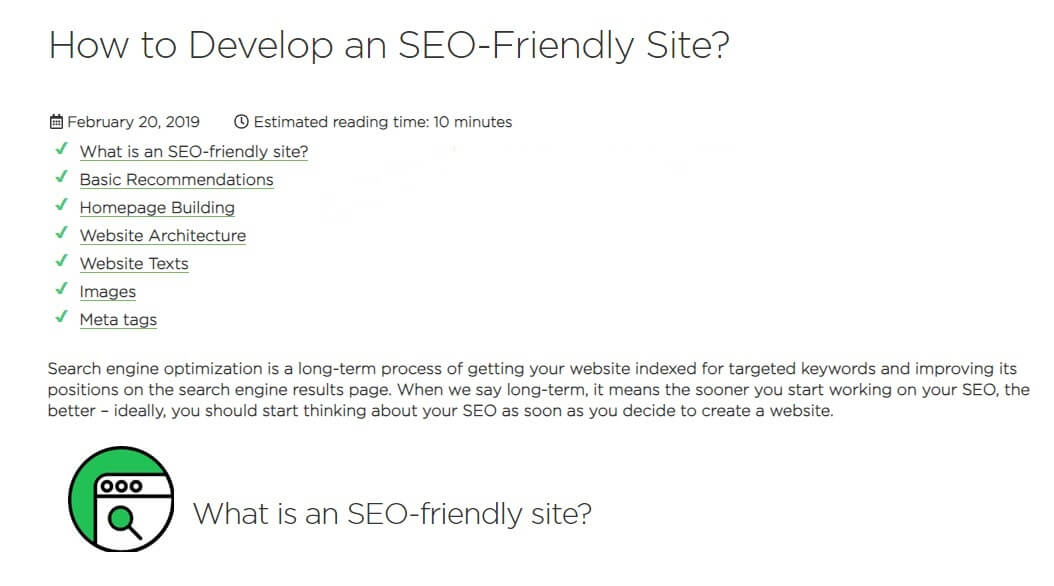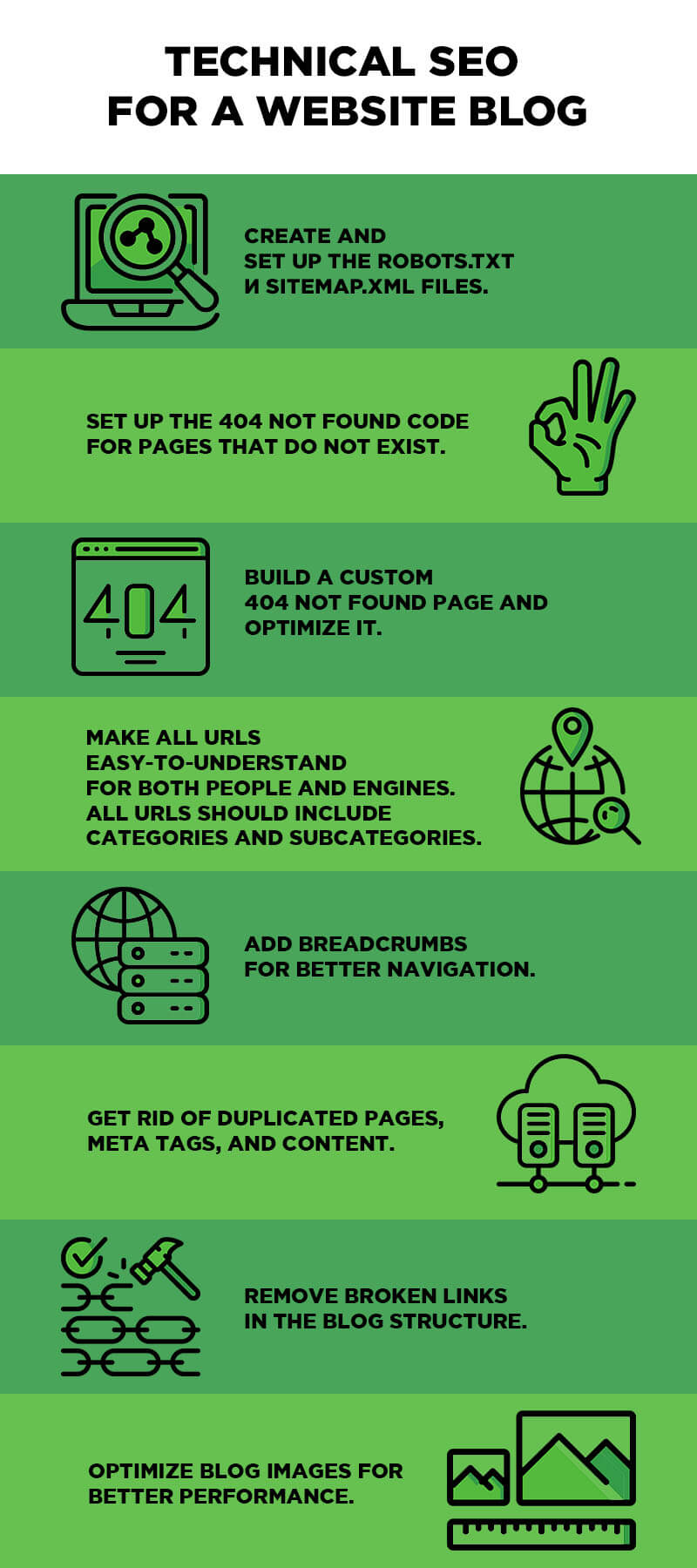SEO Tips to Promote Your Blog
April 9, 2019 Estimated reading time: 8 minutes
A blog is a site or a site section with some content in the form of text, videos, images, photos or infographics. SEO for blogs does not significantly differ from the SEO of other resources. There are some points you should be focused on to see the results of the blog promotion.
Why Do You Need SEO for Blog?
There are various types of blogs:
- personal blogs;
- corporate blogs (for companies or organizations);
- professional blogs (for example, a photographer’s blog, or a blog of an artist);
- news blogs (say, a person with expertise in a particular field collects and publishes news on their website);
- and many others that have the features of the blog types above.
All blogs have a common thing: their readers look for a unique point of view. A blogger usually has in-depth knowledge in a particular area, and it’s their personal experience that users want the most. Typically, a website with a blog (or a standalone blog) has a commercial purpose, i.e., to promote your business by increasing purchases. SEO helps to bring more potential customers to the site.
You should learn how to write a blog to promote your business, even though a blog does not work as a marketplace. Blog articles and product pages should work together.
From the SEO standpoint, blog promotion is perfect for implementing various SEO tactics:
- you can use low-volume keywords which are hard to blend in on product and category pages;
- if the blog makes a website’s section rather than the entire site, blog articles can help the website to rank higher and generate more traffic;
- when you blog, you write various articles and update them regularly. Up-to-date content is a positive signal for search engines;
- engaging and helpful articles help to share your professional expertise and build a trustworthy site.
Content is the backbone of a blog. It’s the primary reason users come to visit it. Curate your content and keep in mind that it should be helpful. From the SEO standpoint, your articles should answer the user’s question and contain keywords.
To write an SEO-friendly blog post, you need to:
- build the semantic core;
- write and publish the text;
- wait for the search robots to crawl the page.
The simple steps above are crucial for the promotion of your blog in search engines. Search queries make the foundation of the semantic core. With queries, the user finds the answer to their question, no matter what website will help in the end.
Say, you have an online store of electronics and write a blog where you share how to be a good electrician who earns decent money. If there is some article that sorts out a burning question and tells how to solve the problem, the user won’t care on what website it’s published. However, the chances are that they will remember your site and come back to buy something, or read more helpful tips, which is a good thing anyway.
How to optimize your blog content
- Build the blog structure; assign your articles to categories or tags, mind hierarchy and arrangement.
- Create convenient navigation so that the user understands where they are and where they can get to by clicking the buttons on your website.
- Use keywords: when you collect the keywords that your target audience uses in the search, you can easily provide answers to those queries.
- Include LSI (Latent Semantic Indexing) keywords, related phrases to your main keywords. They get your articles rank well in search engines.

LSI keywords can be found right in the SERP; these are searches related to your query.
- Add meta tags (title, description, h1): search robots use meta tags to display your page on the SERP to the most relevant queries. So try to include the most important words to your meta tags.
- Create hash links for internal page navigation.

- Arrange cross-links: the link mass increases the credibility of the site, speeds up the indexation and increases its rankings in the search.
- Get published on other sites and link back to your blog to grow its audience and popularity.
It is vital to make a content plan (a schedule of all publications for at least a month ahead.) Track all the steps of the process and make notes. That will show you what blog posts work best and when to publish them.
If you blog on your website or its subdomain rather than on WordPress or Blogger, you can optimize its technical parameters that directly affect search engine promotion. The site should be internally and externally optimized; in this regard, the blog is no different from other sites.
How to optimize your blog’s technical side: a checklist

In the blog, you should optimize everything: the links, load speed, code, and texts.
What Else Should You Do Beyond Blog SEO?
SEO is not the only thing that you should be focused on when promoting blog content. You will have to pay attention to some other things as well:
- Work on the site’s design to make it user-friendly and convenient to consume the content.
- Understand how to use social media to promote your blog. Manage social media pages, add share buttons. Publish links to your blog posts on your social pages and groups, as well as on reciprocal sites like Triberr, social bookmarking sites like Reddit, and niche forums.

- Regularly update the blog content: add articles, reviews, guides, lists, cases. Try different options and analyze their performance in tools like Google Analytics.
- Create discussions, write comments, and be sure to answer questions.
- Guest blog on other websites as an expert.
- Take part in niche in-person events.
SEO Tips to Promote Your Blog
5 (
2 votes)







